Results 1 to 10 of 34
Thread: W. Greaves & Sons
Hybrid View
-
11-20-2017, 10:35 PM #1

Not sure I can teach anyone anything but here are a few thoughts. In my opinion the best place to start is looking at a LOT of razors, compare them in terms of what you most commonly see vs unusual findings for similar/dissimilar marked and/or shaped blades. read what others have said regarding those blades, shapes, grinds from the particular timeframe for each blade in question (Not everything written here is accurate and many times newer findings clarified earlier inaccuracies or misunderstandings so diligence is required when sifting through old posts here). I've been somewhat prone to jumping the gun myself and have inserted a foot or two into a wide open mouth

I personally Also look for obvious and blatant differences in surface texture, often regarding tangs and blade faces this can be more readily observed in person than in pics so I purchase an insane amount of blades just to examine sometimes. The level of Oxidation and the pattern it presents in are sometimes telling on more well executed regrinds. Traces of a blade etch under obvious grind lines are a dead giveaway.....
well, I guess after writing this far it will best to post pics for illustration purposes. I'll post a few pics later on.......Last edited by silverloaf; 11-20-2017 at 10:37 PM. Reason: misspelling
Silverloaf
-
11-20-2017, 10:47 PM #2
-
11-21-2017, 01:08 AM #3

read this thread:
http://straightrazorpalace.com/razor...revisited.html
Then some examples of what the op's Greaves may have looked akin to:
http://straightrazorpalace.com/razor...blade-now.html
http://straightrazorpalace.com/custo...lack-horn.htmlSilverloaf
-
11-21-2017, 01:23 AM #4

Regrinds have historical backing and can be beneficial in some cases but discretion again needs to applied here, since it certainly could erase some historical significance doing a regrind and details of a blades origin can be lost. Abating the spread of oxidation, evening up hone wear, making honing an easier task, correcting a fault in a blade. These have all been used as reasons for regrinding.
As seen in some of my pics here a regrind does not always mean hollow grinding a blade either. This is the far more attractive option to someone like me when a regrind is decided upon. If a blade is a near wedge when I commence a regrind it remains a near wedge when I've finished the regrind. As little surface metal removed as possible is my general rule.
p.s, the top pic shows some regrinds along with some hat are obviously hollow ground intentionally, and etched.Silverloaf
-
11-21-2017, 01:31 AM #5

Some with obvious signs of light regrinding. look at the junctions between blade and tangs, and notice some have a partial etch on the blade under slightly more course grind lines than the rest of the blade faces. Uneven regrind on reverse of a couple blades, difference in how oxidation presents and how light reflects off the different surfaces.
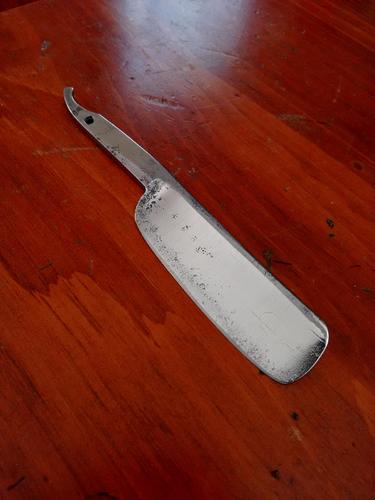
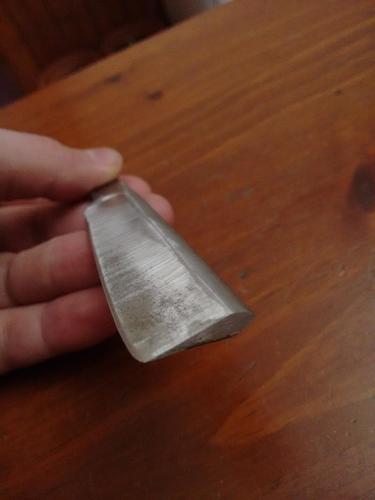
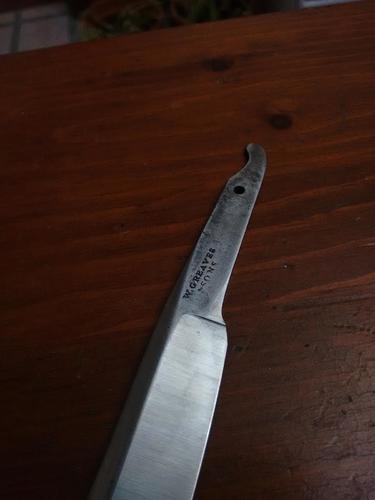
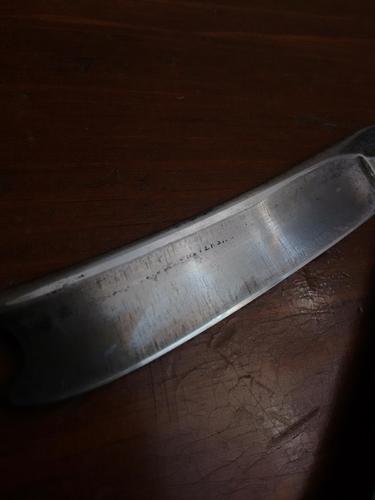
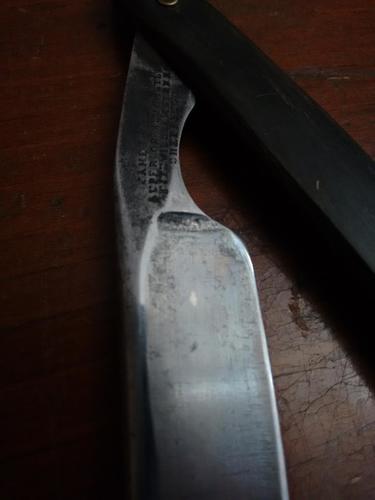
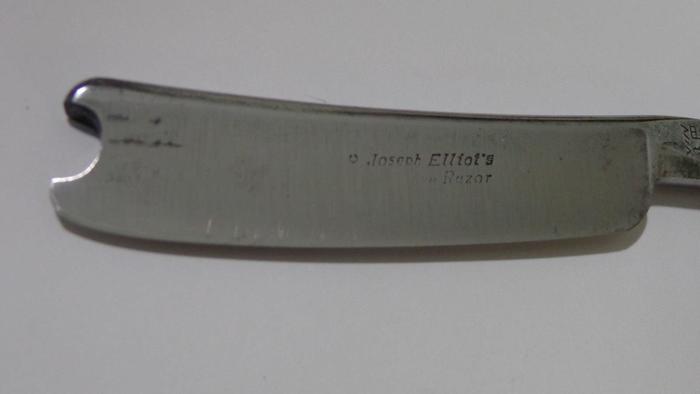 Silverloaf
Silverloaf
-
The Following User Says Thank You to silverloaf For This Useful Post:
JazzDoc (11-30-2017)
-
11-21-2017, 01:51 AM #6

And here is a Clark & Osborn dating from 1822-30 (G crown R), perhaps a decade later or maybe contemporary to the op's Greaves, but shows similar shape anyhow. It shows the tang reshaped as I mentioned.
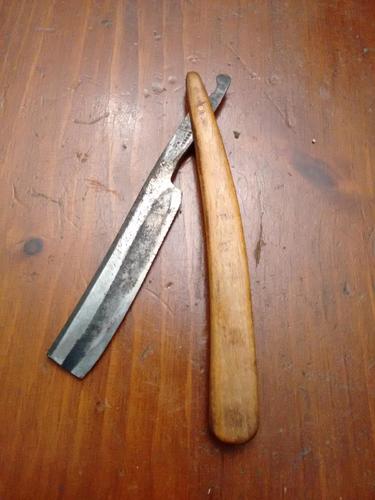
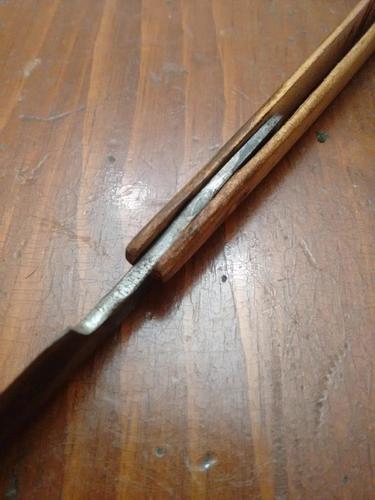
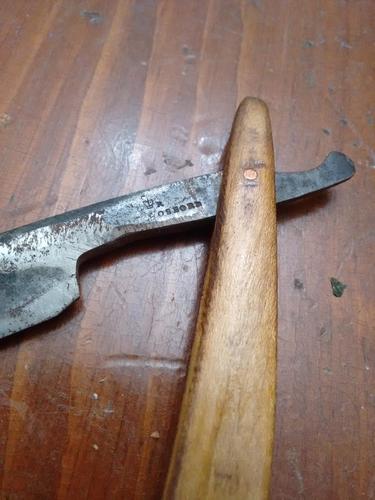 Compare this to the razors in the linked threads I posted earlier
Silverloaf
Compare this to the razors in the linked threads I posted earlier
Silverloaf
-
The Following User Says Thank You to silverloaf For This Useful Post:
JazzDoc (11-30-2017)
-
11-21-2017, 03:33 AM #7Member

- Join Date
- Sep 2017
- Location
- Chicago IL
- Posts
- 57
Thanked: 14
I'm not sure if this is a stub tail even though it looks pretty short, but that's due to how long this blade is - 3.5 inches about and it scares me to shave with it.
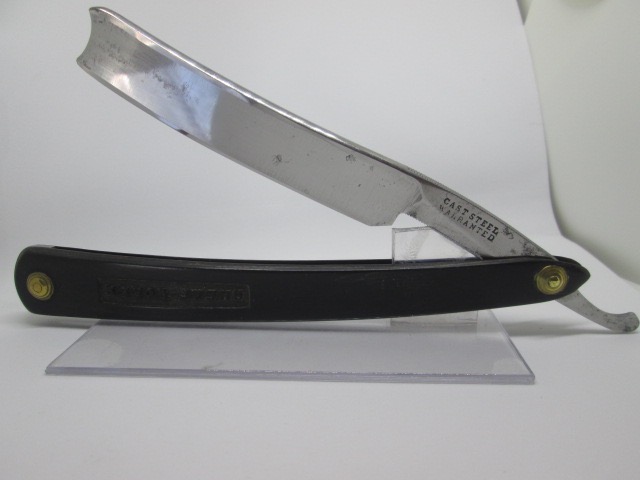
-
The Following User Says Thank You to buanadha For This Useful Post:
JazzDoc (11-30-2017)


 15Likes
15Likes LinkBack URL
LinkBack URL About LinkBacks
About LinkBacks







 Reply With Quote
Reply With Quote